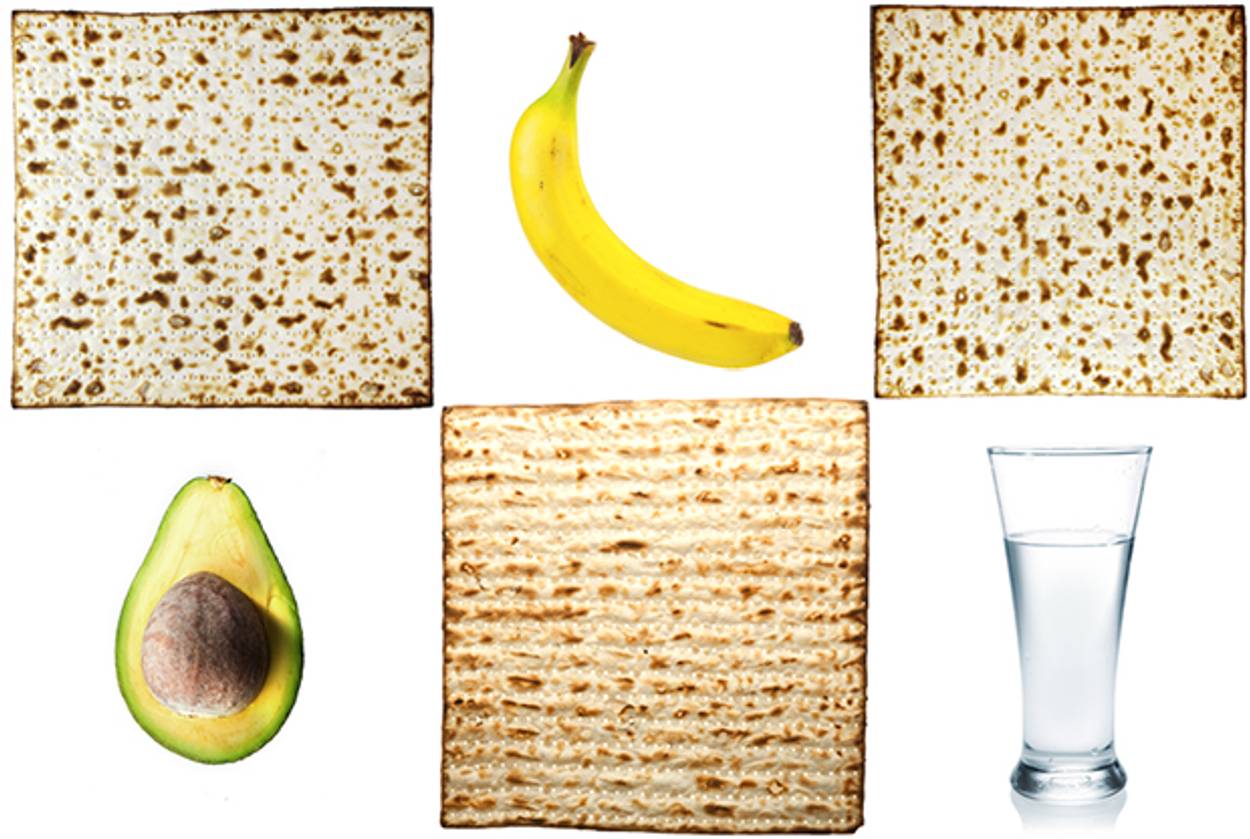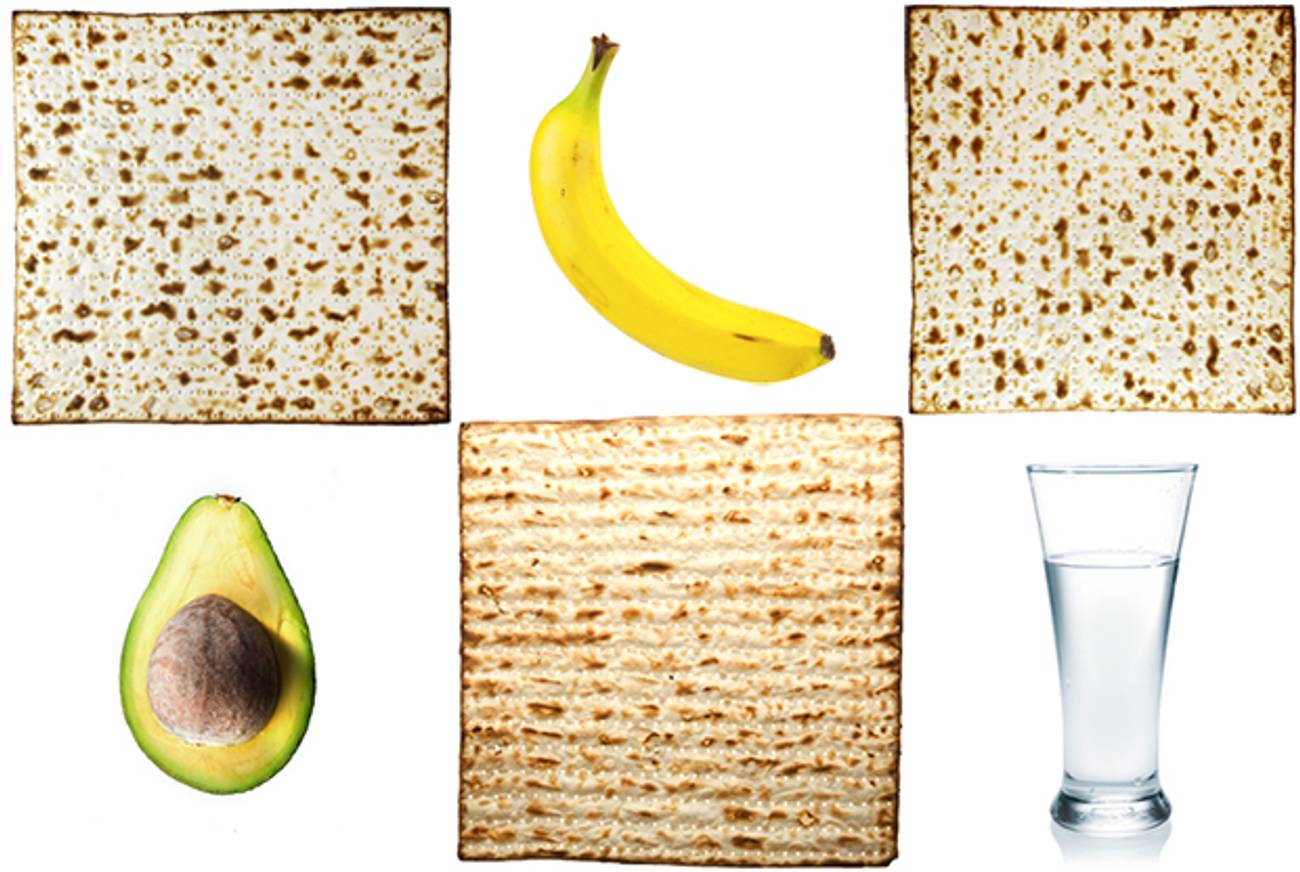How To Eat Right on Passover: Staying Healthy With a Limited Menu
Does your typical holiday involve a huge Seder meal followed by a week of matzo and macaroons? You can do better. Here’s how.




If we simply ate the foods off the Seder plate—an egg, some horseradish, a scoop of haroset—nobody would worry about weight gain during Passover. But our holiday feasts go far beyond unleavened bread and bitter herbs. No doubt, it will be hard to resist all the tantalizing temptations placed before us next week. But by keeping a few key things in mind, we can please our Passover palates without turning into matzo balls ourselves.
THE SEDER
Preparing to stay healthy on Passover starts before the actual Seder meals. First, as with any meal, do not go into the Seder hungry, especially if your Seder has a long first half, which means the meal won’t be served until late. An empty stomach makes it difficult to fuel your mind to make healthy choices. It may not be easy in any case to pass up your aunt’s famous kugel, but if you feel satisfied before it’s placed in front of you, you can at least think clearly enough to reason against devouring a whole pan of it. Try eating a snack with protein and fiber, such as one-quarter of an avocado with sliced cucumber and tomato, within one hour of the start of your Seder. If you cannot find a real food snack, try swiping a high-quality-protein egg off the Seder plate!
Once the Seder gets started, use the first half’s blessings over foods, including the greens and bitter herbs, to start arming your belly with the best fiber-filled choices. Use the matzo eaten during the Seder as the starch portion of your meal, and stick with veggies and protein once the buffet is served. And as for the matzo, stick to whole grain options to help you become full on less starch.
If you are overwhelmed (and starving) by the time the buffet is presented, pile on tons of veggies immediately and start crunching, giving some time for both your belly and your mind to consider good choices for the other spots left on your plate. Don’t scarf the carbs first; you may be more likely to not only overeat, but actually to consume more calories overall.
When scavenging the buffet table during the meal, think about quality over quantity. It is not a matter of what you will not eat (“No way I’m going to touch one plate of potatoes”) but instead, what you will allow yourself to eat. If you write off foods before coming into the meal and then have a taste of something on your “forbidden” list, you are more likely to lose control and overeat. It is better to have a realistic plan to consume the foods that are worth it.
If you are hosting, take advantage of this control by offering many vegetable dishes that can fill up most of your plate. If you are eating elsewhere as a guest, arm yourself with knowledge of how much you can eat: four to six ounces high-quality protein like fish or chicken, about a half-cup of a good quality carbohydrate like potatoes, and then mostly vegetables. Also, it is not a crime to casually ask your friends or family what they will be serving. Knowing before you go will help you target exactly which foods will make up your meal and shrug other dishes off as not being an option.
Some of the Seder’s classic dishes can be used to your health advantage. For example, matzo ball soup is a great choice—for a whole meal: The matzo ball is a starch, the chicken is a protein, and the celery, onion, and carrots are vegetables. Think about eating a large bowl of soup, slowing down and allowing yourself to feel full and satisfied; you may surprise yourself by not feeling the need to eat more food. Careful with gefilte fish, though: It typically has added sugar and starch with less real fish.
According to the well-cited Mediterranean diet, drinking a glass of red wine with a meal is a healthful option. The antioxidant resveratrol has anti-inflammatory properties, helping to prevent atherosclerosis. We are pushing the limits with the Seder’s required four glasses of wine, though, so try to skip the added sugars from the dessert table.
When it comes to dessert, fresh fruit and dark chocolate are good options, but if you really must try your host’s I-can’t-believe-it’s-not-hametz dessert, choose one item and move on. Remember, no one is holding you hostage until you eat every item at the table. You should not feel it is mandatory to try every dish to be a grateful guest.
THE REST OF THE HOLIDAY
Many of us rely more on processed and pre-packaged foods on Passover than we normally do. So, no matter what you choose to eat for the eight days, if you make it from scratch, you’re already making a better choice for your health.
Try to incorporate more fruits and vegetables into your daily meals and snacks; they’re kosher for Passover and taste the same as they do the rest of the year. Plan ahead and crunch on precut carrots and cucumbers instead of the limited munchie options of kosher-for-Passover chips and macaroons.
During the holiday, carbohydrates and starches are the least of what you eat because so many of them aren’t kosher for Passover. Because of this, Passover is an opportunity to balance your meal and snack choices the way they truly should be for overall health and weight loss; take this chance to learn how to recalibrate your food choices for the rest of the year. And drink tons of water to keep GI symptoms like bloating and constipation at bay, especially if you are not used to the high fiber content of fruits, vegetables, and whole grains.
Beth Warren is a registered dietitian and author of the book Living a Real Life with Real Food: How to Get Healthy, Lose Weight, and Stay Energized—the Kosher Way.